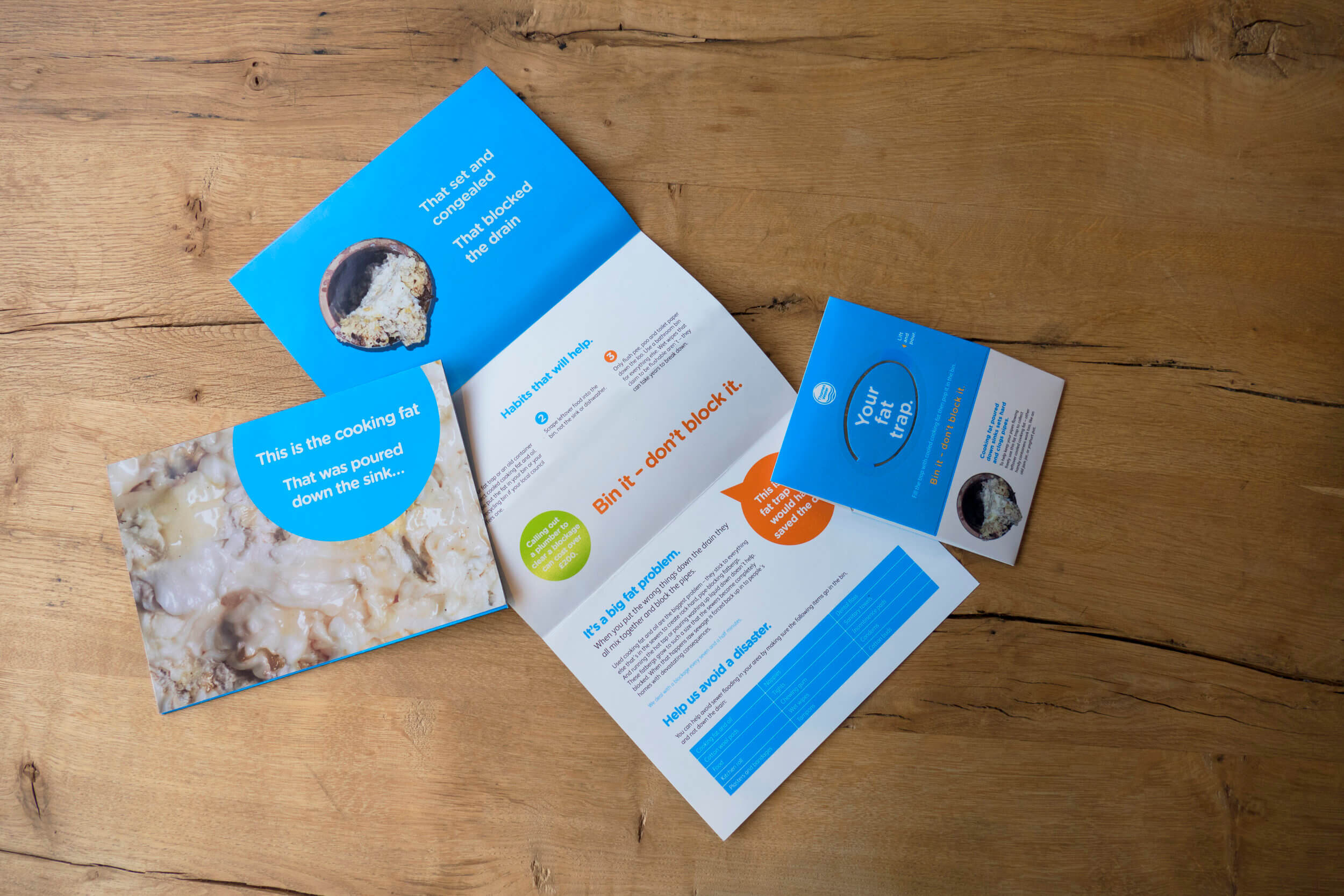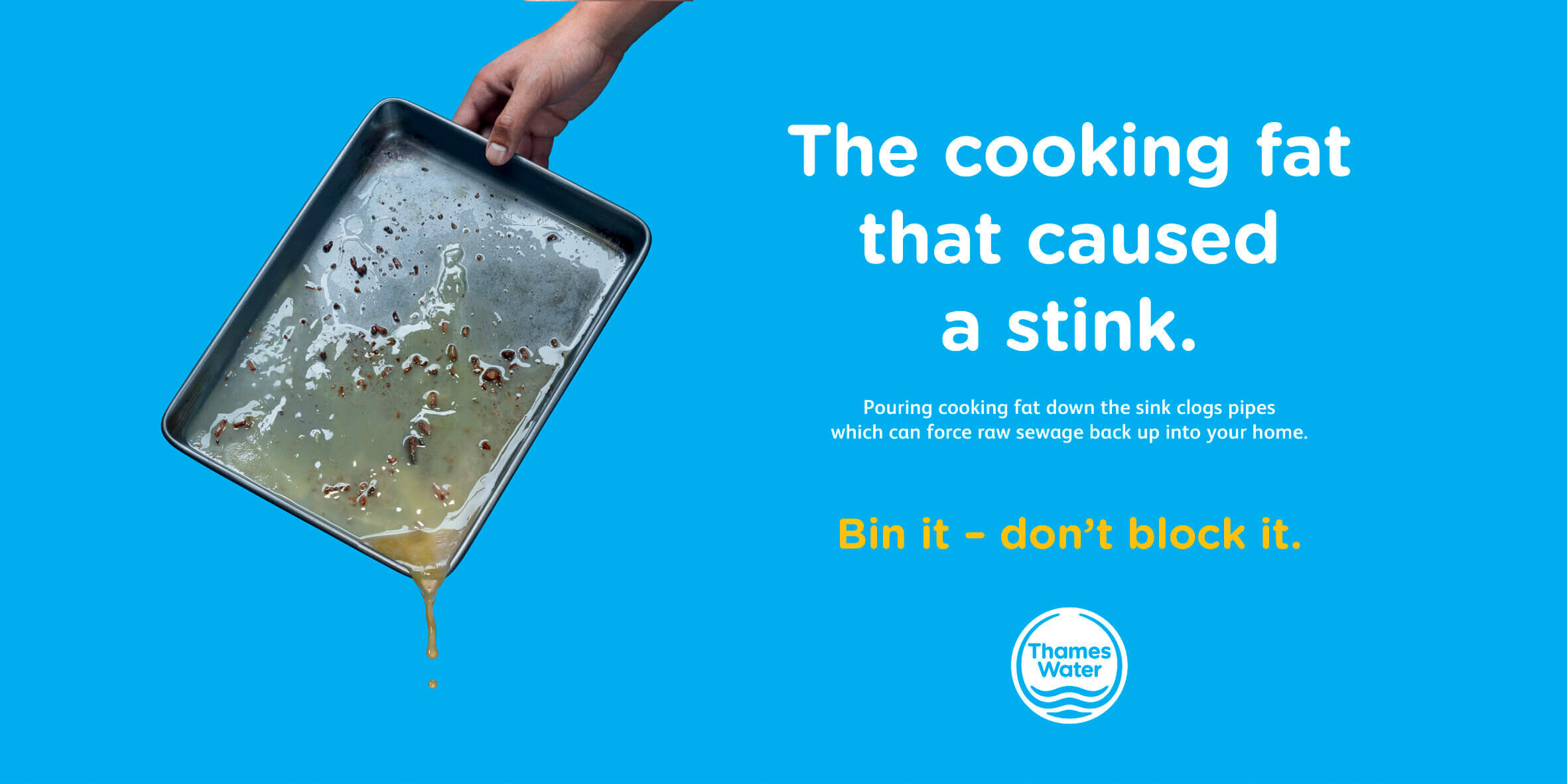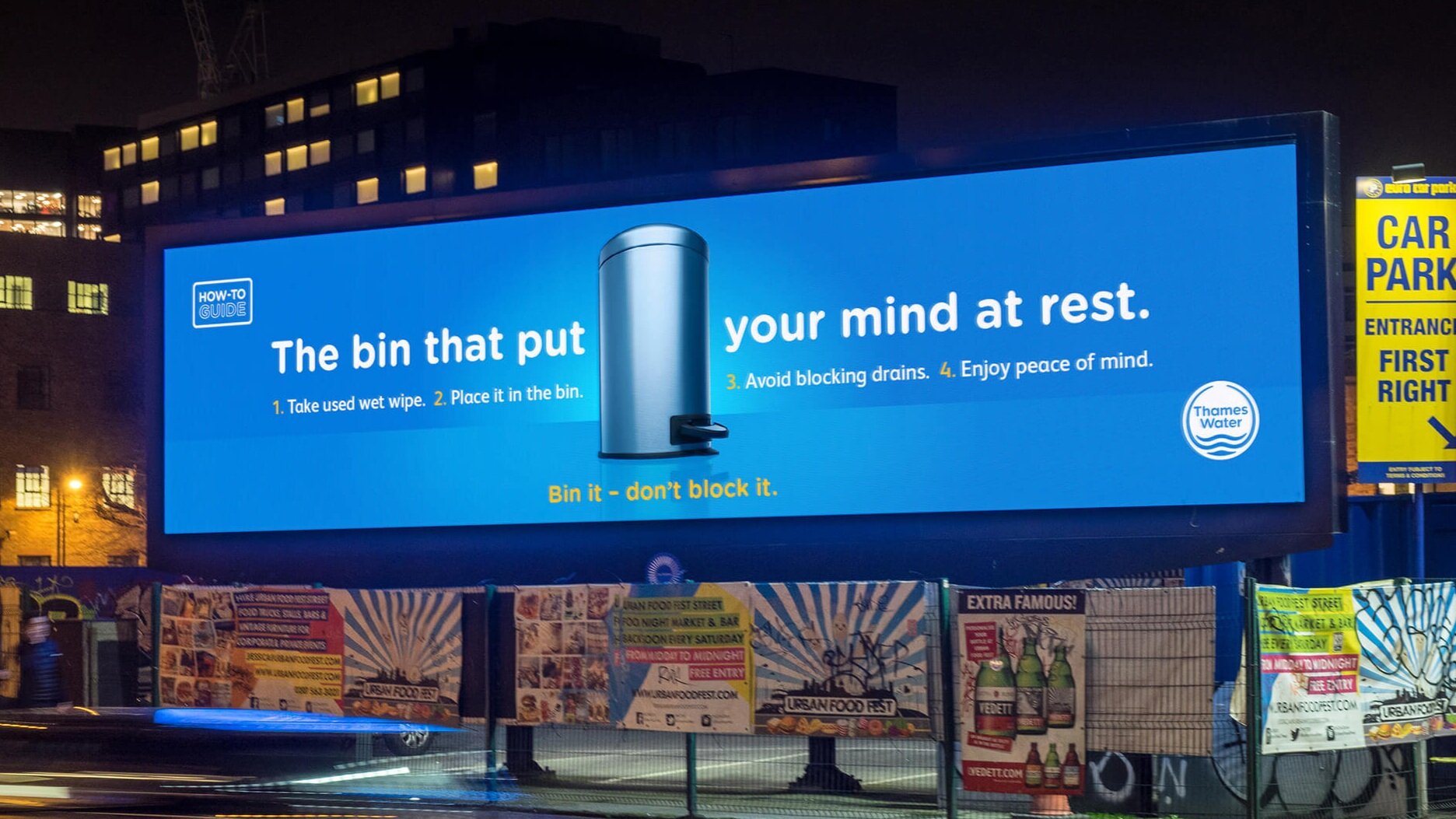Bin it – don't block it
Wet wipes. Cotton buds. Make-up pads. Cooking fat.
Put them down the loo, or the sink, and you could have a blockage on your hands. Worse still, that blockage can force sewage back into your home.
Lack of awareness means this is a growing problem – 55,000 Thames Water customers are now affected every year, with 7,000 experiencing sewage backing up into their homes and gardens. Blockages also cause road closures, street flooding and polluted watercourses. All this adds about £12 million to customers’ bills every year.
London and the Thames Valley are amongst the worst affected areas. So our challenge was to raise awareness of the problem and get Thames Water customers to change their pipe-clogging ways.
Small actions can have big consequences
Flushing a cotton bud down the loo may seem insignificant, but the collective result of lots of people believing it’s okay is anything but. Fortunately, a small change in behaviour is all that’s required to prevent the problem in the first place. The small behavioural change we’re talking about is getting Thames Water customers to use the bin. And that’s what led us to ‘Bin it – don’t block it’.
To change behaviour we needed to explain what actually happens when a pipe becomes blocked. There’s a sequence of events that starts with flushing the wrong things away and ends with a flooded home. So our campaign was designed to explain this ‘cause and effect’.
We created a range of executions that dramatise the dire consequences that can grow from seemingly innocuous actions
Awareness of the problem was delivered via posters in targeted postcodes. Digital display advertising on the Google Display Network and Facebook reached households in key hotspots and drove traffic to a campaign microsite that explained how to avoid blockages.
Direct mail was sent to over 260,000 households in our highest-risk areas. Our mailer not only provided helpful information, but included a free fat trap as well, to aid the correct disposal of cooking fat.
The campaign was extended through an online video campaign based around a series of 'How-To Guides'
This How-To idea is now extending to large out of home in and around London and the Thames Valley.









